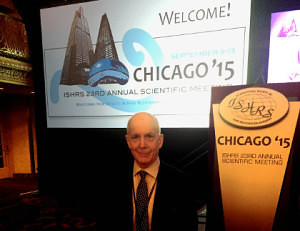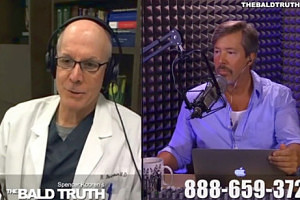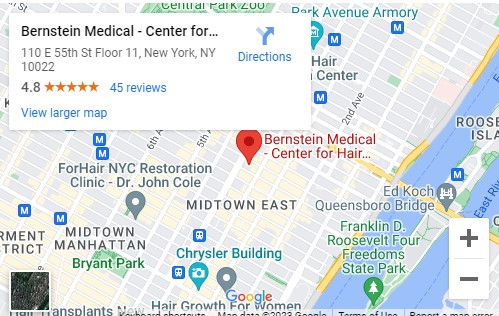A review of research on the efficacy of Viviscal, published in the September 2015 issue of the Journal of Drugs in Dermatology, suggests that the oral supplement may increase hair volume as well as the thickness of healthy, terminal hairs. The article presented more than two decades of research on the hair regrowth product and also included a discussion with a roundtable of dermatology and plastic surgery experts. Both the research review and roundtable discussion point to the benefits of Viviscal, however the article’s conclusions can be questioned due to the appearance of a conflict of interest between the researchers and Lifes2good, Inc., the company that produces Viviscal. Additional independent research needs to determine if Viviscal is a viable and effective hair loss treatment.
Q: I have read several articles on the internet which suggest that resistance training can accelerate male pattern baldness. Is there any truth in this? — B.F., Altherton, CA
A: Anything that raises androgen levels in your body can potentially accelerate hair loss. That said, I suggest to exercise as you normally would. As long as you don’t take drugs to enhance your workout, the effects should be minimal.
Dr. Bernstein was interviewed for an article in NYCityWoman.com that ran the gamut of available treatments for hair loss in women. Read for some select quotes on a wide range of topics related to hair loss in women and treatments for female patients with androgenetic alopecia (common genetic hair loss).
Q: How are specifications for recipient sites inputted into the ARTAS® robot? — A.F., Queens, NY
A: At the outset of the procedure, the physician sits at a computer terminal that is connected to the ARTAS Robot and enters the specifications directly into the robot’s software. Variables programmed in this manner include: the number of recipient sites, density of sites, angle that the hair will extrude from the skin, depth of recipient sites, and the minimum distance away from existing hair follicles that a site can be created.
Q: Will Robotic FUE reduce the cost per graft for FUE hair transplants? — F.K., Ditmars Boulevard, NY
A: Robotic FUE may cost slightly more per graft than a typical manual FUE procedure due to the greater expense of this new technology. At Bernstein Medical, we use the ARTAS Robotic System for all Follicular Unit Extraction (FUE) procedures.
Q: How does the ARTAS System avoid damaging hair follicles in the balding area during recipient site creation? — R.K., Brooklyn, NY
A: The ARTAS robot’s optical guidance system enables it to accurately create recipient sites in areas of thinning hair without damaging existing hair follicles. During the recipient site creation process, the robot uses its advanced image-guided optical system to scan the surface of the skin, locate existing hair follicles in the recipient area, and then create recipient sites at a specified distance from these existing hairs.
The ARTAS robot carries out this process rapidly, accurately, and consistently according to the physician’s programmed specifications. Thanks to the microscopic precision of the image-guided technology, the robotic hair transplant system can avoid injury to follicles that can result when Follicular Unit Extraction (FUE) is performed using manual techniques.
Dr. Bernstein was quoted in an article on NYCityWoman.com, where he spoke about the risks associated with popular hair extensions, such as weaves, wefts, and similar clip-in or add-on pieces. Extensions are a stylistic choice that allow women to dramatically change their appearance. However, their frequent use can contribute to a type of hair loss in women called traction alopecia – hair loss around the frontal hairline and temples caused by tight hairstyles pulling on the follicles.
Dr. Bernstein appeared as a guest on The Bald Truth, where he was interviewed by Spencer Kobren, the show’s host, about the ARTAS® Robotic System for FUE hair transplant surgery and the latest updates to the robotic system. He also discussed increasing demand for both FUE procedures and hair transplants, in general, around the world.
Dr. Bernstein appeared as a guest on The Bald Truth, where he was interviewed by Spencer Kobren, the show’s host, about the ARTAS® Robotic System for FUE hair transplant surgery and the latest updates to the robotic system. He also discussed increasing demand for both FUE procedures and hair transplants, in general, around the world.

Small, simple modifications in the sequence of the major steps in a Follicular Unit Extraction (FUE) hair transplant procedure will be beneficial to healing and growth following the procedure, says renowned hair restoration surgeon Dr. Robert M. Bernstein. Presenting at the 23rd Annual Scientific Meeting of the International Society of Hair Restoration Surgery (ISHRS) in Chicago, Illinois, Dr. Bernstein detailed how making recipient site incisions before harvesting follicular unit grafts can improve the outcome of an FUE procedure.
For years, it was standard operating procedure in an FUE hair transplant to first harvest follicular units, then create recipient sites in the balding areas and place the extracted units into these sites. This practice persisted despite the fact that hair restoration physicians had known for years that prolonged periods of time outside the body decreased survival of follicular unit grafts. With the widespread adoption of FUE, and the long time needed for the extraction phase of the procedure, Dr. Bernstein looked for ways to streamline the process.







